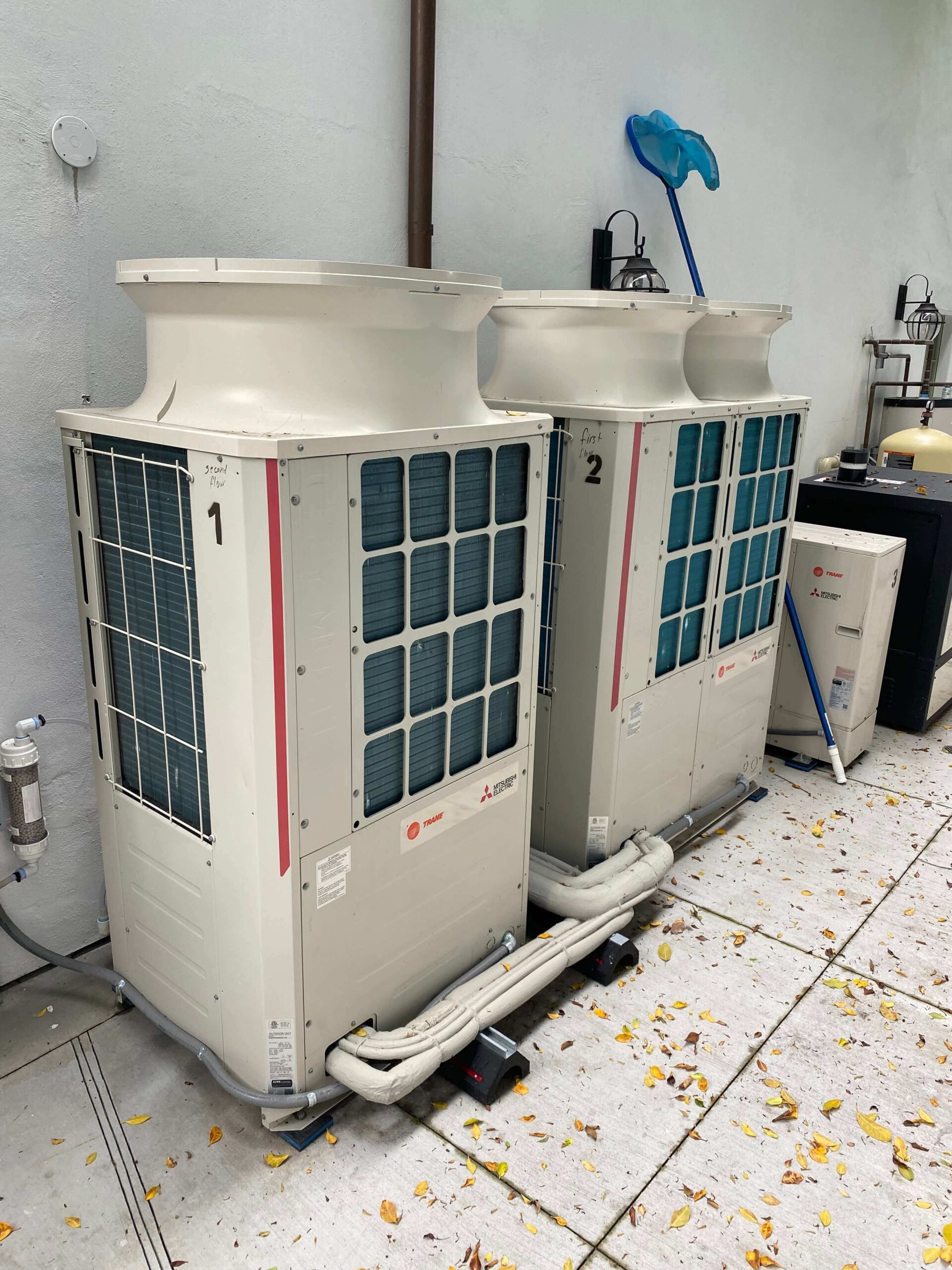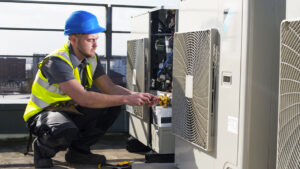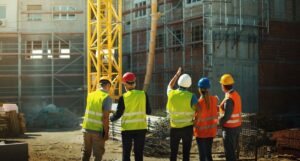
Benefits Of VRF Systems In Commercial Buildings
In the ever-evolving world of HVAC (Heating, Ventilation, and Air Conditioning) technology, Variable Refrigerant Flow (VRF) systems have emerged as a game-changer for commercial buildings. These systems offer a host of advantages that can significantly enhance the comfort, energy efficiency, and overall functionality of commercial spaces. If you’re a property owner or manager, understanding the benefits of VRF systems is crucial for making informed decisions about your building’s HVAC infrastructure.
Understanding VRF Systems
Before we delve into the myriad benefits of VRF systems, let’s first establish a clear understanding of what VRF systems are and how they work.
What Is a VRF System?
A Variable Refrigerant Flow (VRF) system is a sophisticated HVAC technology that provides precise control over the amount of refrigerant flow to indoor units based on the cooling or heating requirements of individual zones. Unlike traditional HVAC systems that operate at a constant capacity, VRF systems can vary their refrigerant flow to meet the specific needs of different areas within a building. This flexibility makes them highly efficient and adaptable.
How Do VRF Systems Work?
VRF systems consist of an outdoor unit, which houses the compressor and condenser, and multiple indoor units installed in various zones or rooms within a building. These indoor units are connected to the outdoor unit through refrigerant lines.
The key to the efficiency of VRF systems lies in their ability to modulate the flow of refrigerant to the indoor units. When a particular zone requires cooling, the system delivers the precise amount of refrigerant needed to achieve the desired temperature. Conversely, when heating is required, the VRF system adjusts accordingly, making it an ideal choice for maintaining consistent comfort levels in diverse spaces.
Advantages of VRF Systems in Commercial Buildings
Now that we have a solid foundation on what VRF systems are, let’s explore the numerous advantages they bring to commercial buildings:
1. Energy Efficiency
Energy efficiency is a paramount concern for commercial building owners and managers. VRF systems excel in this aspect. They are inherently energy-efficient due to their ability to adjust refrigerant flow based on demand. This means they consume only the energy required to maintain the desired temperature in each zone, reducing energy wastage significantly. Lower energy consumption translates to reduced utility bills and a smaller carbon footprint, contributing to both cost savings and environmental sustainability.
2. Zoned Comfort Control
One of the standout features of VRF systems is their zoned control capabilities. In a commercial building, different areas may have distinct temperature requirements. VRF systems allow for individualized control of each zone, ensuring that occupants can enjoy customized comfort. This flexibility is particularly beneficial in open-plan office spaces, hotels, and retail establishments, where varying comfort preferences are common.
3. Simultaneous Heating and Cooling
Traditional HVAC systems struggle with providing both heating and cooling to different areas simultaneously. VRF systems, on the other hand, can deliver both heating and cooling to different zones at the same time. This is achieved by diverting heat energy from spaces that require cooling to those that need heating, optimizing energy use and maintaining a balanced indoor climate.
4. Quiet Operation
In commercial settings, excessive noise from HVAC systems can be disruptive and uncomfortable. VRF systems are known for their quiet operation. The outdoor unit is typically the loudest component, and it can be strategically placed to minimize noise disturbances. Indoor units are quieter still, ensuring a peaceful working or living environment for occupants.
5. Space Savings
Traditional HVAC systems often require extensive space for ductwork and large mechanical rooms. VRF systems, on the other hand, are compact and require minimal space. This space-saving advantage can free up valuable real estate within a building, allowing for more efficient use of floor space.
6. Enhanced Control and Monitoring
VRF systems are compatible with advanced control and monitoring systems. Building automation and management systems can integrate with VRF technology to provide centralized control, scheduling, and remote monitoring. This level of control not only enhances comfort and energy efficiency but also simplifies maintenance and troubleshooting.
Benefits Of VRF Systems In Commercial Buildings

Variable Refrigerant Flow (VRF) systems are gaining popularity for heating and cooling commercial buildings due to their energy efficiency, flexibility, and ability to provide personalized comfort. Here are some of the key benefits of installing VRF systems in commercial spaces:
Improved Energy Efficiency
One of the biggest advantages of VRF systems is that they are extremely energy efficient. VRF systems only condition the zones that need heating or cooling at any given time. This helps reduce energy waste compared to conventional HVAC systems that maintain the whole building at the same temperature.
Studies have shown that VRF systems can provide over 30% energy savings compared to traditional HVAC systems. This translates into lower utility bills and a quicker return on investment for building owners. The ability to precisely control the temperature also ensures no energy is wasted trying to heat or cool unused zones.
Zoning Capabilities
VRF systems have excellent zoning capabilities using advanced sensors and variable-capacity compressors. Each indoor unit can be controlled independently to provide personalized heating or cooling to occupied spaces.
For example, in an office building, conference rooms can be set colder, while corner offices can be warmer as per the preferences of occupants. VRF systems maintain pinpoint temperature control within ±1°F, unlike ducted systems.
Quiet Operation
Ductless VRF systems operate very quietly, with indoor units producing noise levels as low as 19 decibels. This is quieter than a library! Such low noise levels prevent disturbances and help improve productivity.
VRF systems completely eliminate the need for noisy air ducts throughout the building. The quiet performance makes them well-suited for hotels, classrooms, and even hospitals.
Flexibility and Scalability
One of the most useful aspects of VRF systems is their incredible flexibility. VRF systems make use of variable refrigerant flow technology that allows easy scaling from small buildings to large commercial complexes with over 100 indoor units.
The outdoor units have modular compressors that can be combined to increase capacity. Additional indoor units can be installed anytime without major ductwork changes. This makes VRF systems highly scalable and flexible for future expansions.
Improved Air Quality
VRF systems help improve indoor air quality by allowing fresh outdoor air to be integrated with the system. Dedicated ventilation units with energy recovery wheels bring in filtered, dehumidified fresh air into the building.
This dilution ventilation removes indoor contaminants and replenishes oxygen levels leading to healthier building environments. The fresh air can also be pre-cooled or pre-heated using heat pumps before supplying indoors.
Easy Installation and Maintenance
Unlike bulky ducted systems, VRF systems are relatively easy to install with small refrigerant piping and simple power/communication wiring. There is no need for major structural modifications or bulky ductwork that takes up valuable space.
VRF systems have very few moving parts and use efficient variable-capacity scroll compressors. This increases reliability and reduces the need for frequent repairs or maintenance. VRF systems last over 20 years, much longer than typical HVAC equipment. Routine maintenance is also simpler with conveniently located outdoor units.
Smart Technology Integration
Advanced VRF systems can integrate natively with building automation systems and smart HVAC controllers using communication protocols like Modbus, LonWorks, etc. This allows centralized monitoring, control, and real-time data collection of HVAC performance across an entire building.
Critical alerts and analysis reports can help facility managers optimize operations. VRF systems can also leverage IoT sensors, predictive analytics, and AI to enable smart buildings with self-learning energy efficiency capabilities.
Economic Viability
Though VRF systems involve a higher upfront investment than traditional HVAC systems, the total life cycle costs are lower over the lifespan of the equipment. The drastically reduced energy usage and ease of installation make VRF systems financially viable with typical payback periods averaging 5-7 years.
Additional benefits like zoned comfort control, scalability to accommodate business growth, and advanced technology integration make VRF systems the best HVAC investment. The superior energy efficiency, low noise/maintenance, and great performance translate into higher productivity and occupancy rates for commercial buildings.
Variable Refrigerant Flow (VRF) systems are a highly attractive HVAC solution for commercial buildings. Their energy efficiency, zoned comfort control, simultaneous heating and cooling capabilities, quiet operation, space-saving design, and advanced control options make them a top choice for modern businesses and property owners.
As you consider HVAC options for your commercial building, it’s essential to weigh the benefits of VRF systems against your specific requirements. The advantages discussed in this article are compelling reasons to explore VRF technology further and determine if it’s the right fit for your facility.
Investing in a VRF system can lead to long-term cost savings, improved occupant comfort, and a reduced environmental impact. To take full advantage of these benefits, consult with a reputable HVAC professional who specializes in VRF system installation and maintenance. With the right expertise and guidance, you can transform your commercial space into an energy-efficient, comfortable, and productive environment.
Are VRF systems suitable for all types of commercial buildings?
VRF systems are versatile and can be used in various types of commercial buildings, including office spaces, hotels, retail stores, healthcare facilities, and more. However, the suitability of a VRF system depends on factors such as building size, layout, and specific HVAC requirements. Larger buildings with multiple zones tend to benefit the most from VRF technology, as it allows for efficient zoning and individualized temperature control. It’s advisable to consult with an HVAC expert to determine whether a VRF system is the right choice for your particular commercial property.
What is the maintenance requirement for VRF systems, and how does it compare to traditional HVAC systems?
VRF systems generally have lower maintenance requirements compared to traditional HVAC systems. This is because VRF systems have fewer mechanical parts and, due to their variable capacity operation, experience less wear and tear. Regular maintenance for VRF systems typically includes cleaning filters, checking refrigerant levels, and inspecting electrical components. It’s recommended to schedule annual maintenance by a qualified technician to ensure optimal performance and longevity. In contrast, traditional HVAC systems with extensive ductwork may require more frequent filter changes and duct cleaning, making VRF systems a cost-effective choice in the long run.
Are VRF systems more expensive to install than traditional HVAC systems?
The initial installation cost of a VRF system can be higher than that of traditional HVAC systems. VRF systems involve specialized equipment, such as outdoor condensing units and multiple indoor fan coil units. However, it’s important to consider the long-term cost savings that VRF systems offer. Their energy efficiency and precise control over heating and cooling translate into lower operating expenses, reduced energy consumption, and potentially lower utility bills. Additionally, the compact design of VRF systems can save valuable indoor space. The return on investment (ROI) for VRF systems often justifies the initial installation cost, especially for larger commercial buildings with varying heating and cooling needs. Consulting with an HVAC professional can help you evaluate the cost-effectiveness of VRF systems for your specific project.

